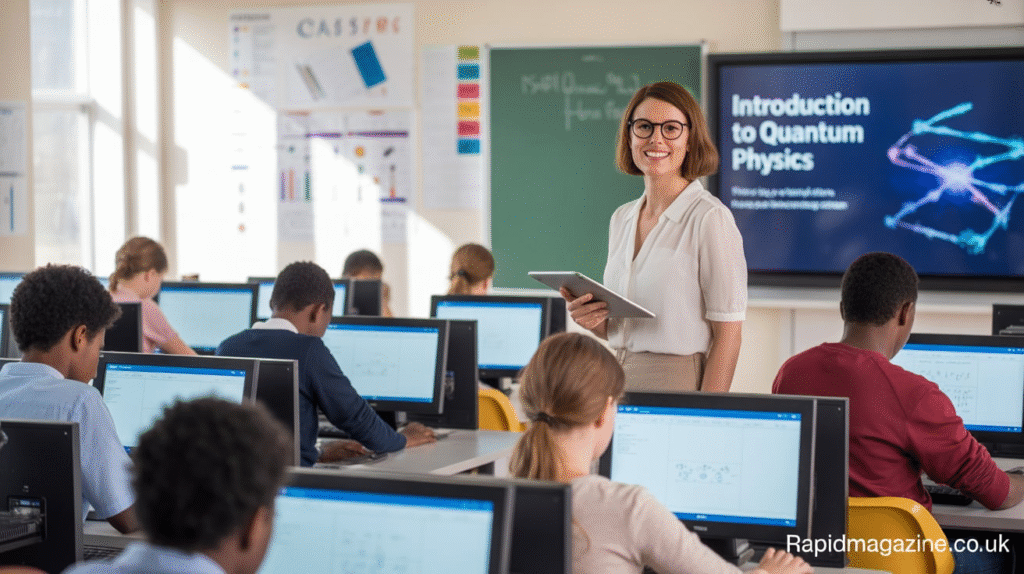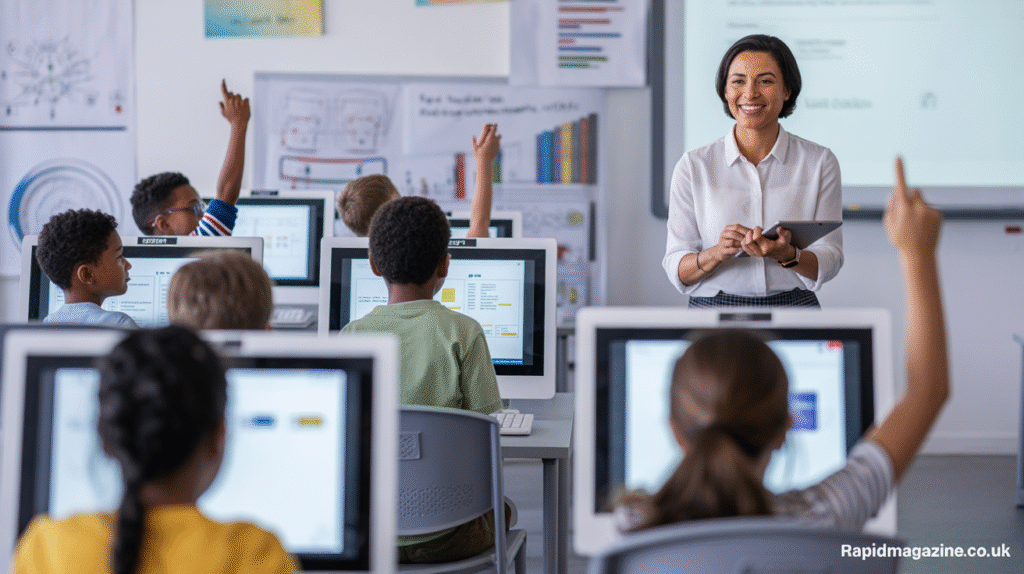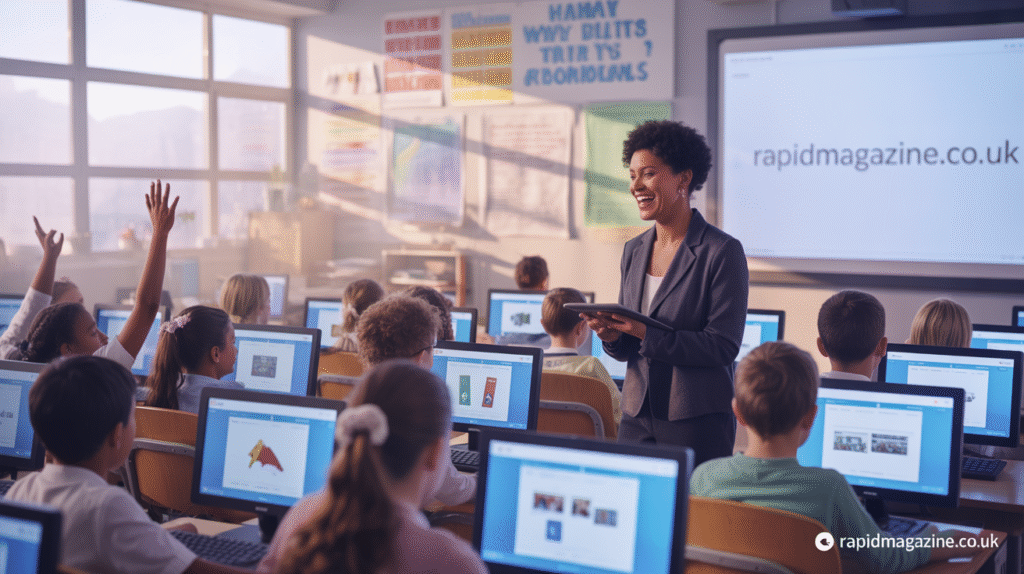Classrooms have always been the heart of learning. However, in today’s world, education is changing at an unprecedented rate. Teachers, parents, and students are seeking smarter ways to make learning enjoyable, adaptable, and effective. That’s where the idea of classroom 15x comes in. It isn’t just about desks and walls—it’s about creating learning spaces that multiply results by ten, or even fifteen times. Imagine a room that boosts attention, sparks curiosity, and helps every student succeed. Doesn’t that sound exciting?
In this article, we’ll explore what makes classroom 15x special, why it works, and how it can be applied in real schools. We’ll cover layouts, technology, teacher strategies, student involvement, and more. By the end, you’ll see how this idea can transform learning for both kids and teachers.
What Is Classroom 15x?

The term’ Classroom 15x’ refers to a new approach to designing and utilizing classroom spaces to maximize learning. Think of it like pressing a “multiply” button on learning outcomes. Instead of adhering to traditional rows of desks and chalkboards, this setup combines smart design, interactive tools, and modern teaching styles. The goal is simple: create an environment where students feel engaged, supported, and ready to succeed.
For example, a classroom 15x might include flexible furniture that can be moved for group projects. It might use interactive whiteboards, digital tablets, and even VR for deeper lessons. The “15x” part represents the idea of multiplying impact—helping students learn more in less time while enjoying the process.
Why Traditional Classrooms Fall Short
Traditional classrooms often feature desks in rows, a teacher at the front, and limited space for movement. While this setup has been effective for decades, it may not always meet today’s learning needs. Kids today are digital natives. They learn more effectively when they interact, explore, and use tools that connect to real-life experiences.
Sitting still for long periods also makes it harder for students to stay focused. And with every child learning differently, one-size-fits-all methods often leave some kids behind. That’s where the classroom 15x approach fills the gap. By redesigning spaces and strategies, teachers can reach every learner more effectively.
Key Features of a Classroom 15x

A true classroom 15x isn’t just about technology or furniture. It’s about the entire learning experience. Some key features include:
- Flexible layouts – Desks and tables that can shift easily for group or solo work.
- Interactive technology – Smartboards, projectors, and devices that bring lessons to life.
- Comfortable design – Lighting, colors, and seating that reduce stress and improve focus.
- Collaboration zones are areas where students can team up to work on projects together.
- Quiet corners – Areas for reading, reflection, or individual tasks.
Together, these elements create a balanced learning space that adapts to students’ needs.
How Classroom 15x Boosts Learning
The biggest advantage of a classroom 15x is its impact on student performance. Research indicates that students learn more effectively when they feel engaged and comfortable. Flexible seating lets them move and stay energized. Interactive tools keep them curious and excited about lessons. Collaborative zones encourage teamwork, a skill that’s vital in today’s world.
Imagine a science class where students explore planets using VR headsets. Or a math group project where kids move desks into a circle to solve problems together. These aren’t just fun activities—they’re powerful learning methods that stick. A classroom 15x makes these experiences part of everyday learning.
The Role of Teachers in a Classroom 15x

Even with all the tools and new designs, teachers remain the heart of a classroom 15x. The difference is in how they guide learning. Instead of standing at the front and lecturing, teachers become facilitators. They walk around, join group discussions, and assist students in solving problems in real-time.
This approach helps students take greater responsibility for their own learning. For example, a teacher might give a project and let students choose how to present it—through a poster, video, or even a play. By offering choices, teachers encourage creativity while still covering key lessons. In a classroom 15x, teachers and students become partners in learning.
Technology in the Classroom 15x
Technology plays a huge role in making classroom learning 15 times more effective. With tablets, laptops, and smartboards, lessons move beyond the textbook. Students can research topics instantly, watch live experiments online, or even connect with classrooms worldwide.
For example, a history class could video-chat with a museum curator for a live Q&A. A math class might use apps that turn problem-solving into a game. These tools don’t replace teachers—they support them by making lessons more engaging and interactive. When used wisely, technology multiplies learning just like the “15x” name suggests.
Designing Spaces for Different Learning Styles
Every student learns differently. Some prefer quiet reading, others need hands-on activities, and some do best in groups. A classroom 15x makes space for all these styles. Flexible furniture allows quick changes. Soft seating areas provide comfort for reading. Large tables support teamwork.
For example, one corner might have bean bags for independent study, while another has high tables for group discussions. This variety ensures no student feels left out. Instead of forcing kids to adapt to the room, the room adapts to them. That’s the beauty of a classroom 15x design.
Real-Life Examples of Classroom 15x in Action
Schools around the world are already implementing the 15-minute classroom idea. One middle school in California swapped traditional desks for mobile tables. Teachers noticed that students were collaborating more and completing group work more efficiently.
In another case, a school in Finland introduced learning pods—small groups of students working in flexible zones. Test scores rose, but more importantly, kids reported enjoying school more. Teachers also felt less stressed because the new setup gave them better control over classroom dynamics. These real stories show how classroom 15x isn’t just theory—it works in practice.
Challenges and Solutions for Classroom 15x
Of course, no system is perfect. Creating a classroom 15x comes with challenges. Budget is often the biggest barrier. Not every school can afford new furniture or advanced tech. Teachers may also need training to use these tools effectively.
But solutions exist. Schools can start small—perhaps by introducing flexible seating or utilizing free educational apps. Teachers can attend workshops or share strategies with each other. Parents and communities can also help by donating supplies or volunteering their time. The key is to see classroom 15x as a journey, not an overnight change. Step by step, schools can get closer to this model.
The Future of Classroom 15x
Looking ahead, classroom 15x is likely to become the standard. As technology grows and teaching methods evolve, schools will shift toward more flexible, student-centered designs. Virtual reality, AI-powered learning tools, and global classroom connections could soon become integral parts of everyday lessons.
The future classroom may not even have walls. Students could join from home, libraries, or outdoor spaces, all connected through shared platforms. However, the core idea will remain the same: learning environments that multiply results, just as the “15x” vision promises. The future looks bright for both teachers and students.
FAQs About Classroom 15x
1. What does “classroom 15x” mean?
It’s a model that multiplies learning outcomes by leveraging flexible design, technology, and modern teaching methods.
2. Is classroom 15x only about technology?
No. While technology is important, it also encompasses seating arrangements, classroom layouts, teacher roles, and student choice.
3. How can schools with small budgets try classroom 15x?
They can start small—such as rearranging desks for group work, adding bean bags, or utilizing free learning apps.
4. Does classroom 15x work for all ages?
Yes. Younger kids enjoy flexible play-learning spaces, while older students benefit from tech-enhanced lessons.
5. Will teachers lose control in a classroom 15x?
Not at all. Teachers actually gain more control by guiding rather than just lecturing. Students become more engaged.
6. What’s the biggest benefit of classroom 15x?
The primary benefit is enhanced student engagement and improved achievement. Kids enjoy learning more, and teachers see better results.
Conclusion: Bringing Classroom 15x to Life
The idea of classroom 15x shows us that learning can be more than worksheets and lectures. With flexible design, interactive tools, and creative teaching, classrooms can truly multiply student success. You can take one step at a time. Even small steps, such as moving furniture or adding new learning zones, can make a significant difference.
If you’re a teacher, parent, or school leader, think about how you can bring parts of this model into your space. The future of education is not about keeping things the same—it’s about creating classrooms that inspire, engage, and grow with every child. That’s the promise of classroom 15x.












